Energy Companies Eye Big Oil and Gas Expansion in Wyoming
Will the fracking boom echo in America’s leading coal state?
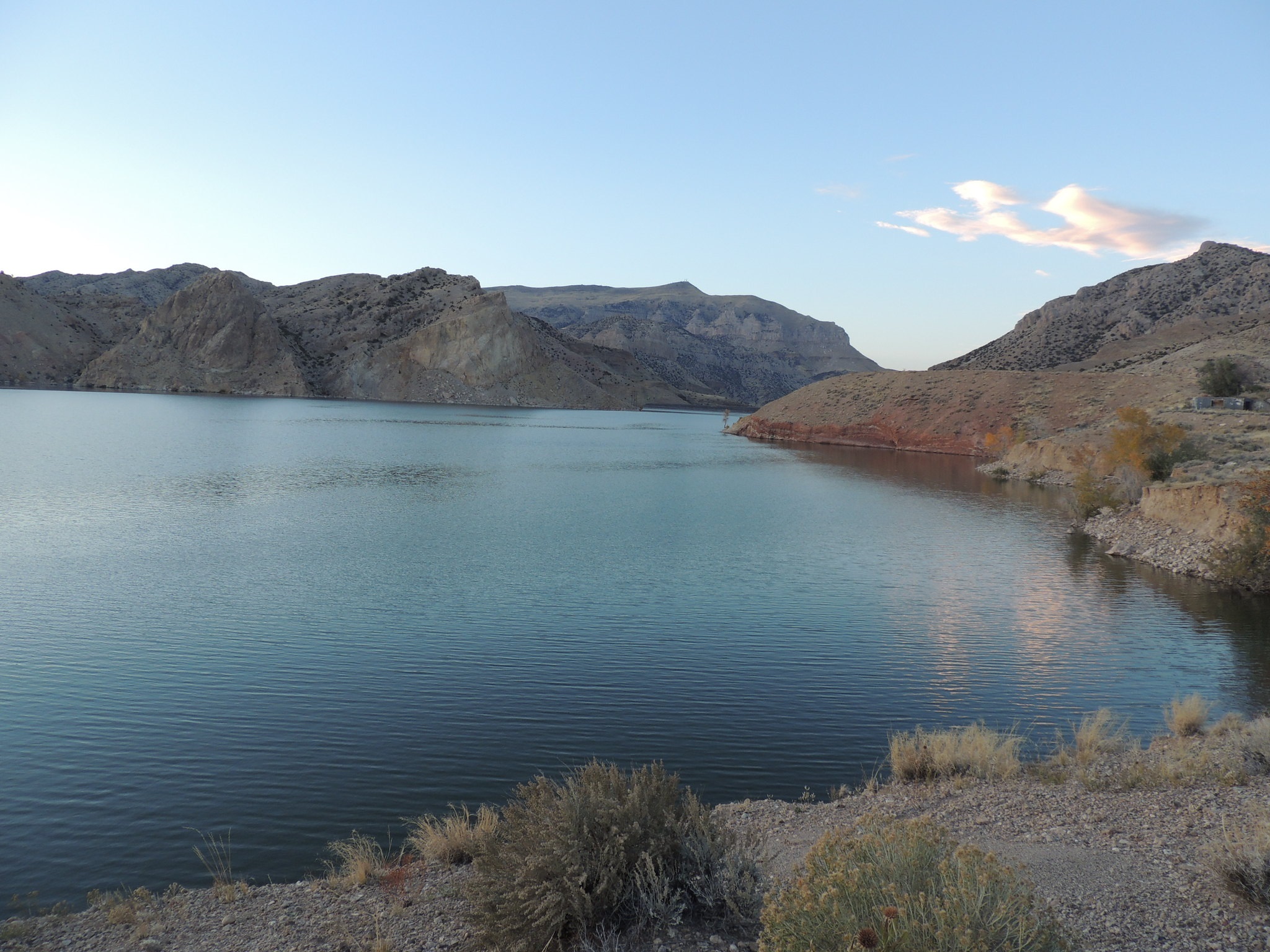
Wyoming regulators are considering a permit revision that would increase the amount of oil and gas wastewater that is discharged into Boysen Reservoir. Photo courtesy of Flickr/Creative Commons user ocean_dfr
By Brett Walton, Circle of Blue
Two huge oil and gas projects in Wyoming are testing the Trump administration’s resolve to maximize energy production from federally managed public lands.
If the Converse County and Moneta Divide projects are fully developed, some 9,250 oil and gas wells could be drilled and hydraulically fractured, mostly into federal lands and subsurface mineral holdings in Wyoming’s Powder River and Wind River basins.
The permitting process for the projects was initiated during the Obama presidency. But the Trump administration characterizes the proposals as part of its “energy dominance” agenda. The two groups of energy companies behind the projects have urged the Bureau of Land Management to hurry federal approval. They see Democratic presidential candidates discussing bans on new fossil fuel development on federally managed lands in order to reduce U.S. emissions of climate-damaging greenhouse gases.
While project supporters, including hotel operators, oilfield services companies, and county commissioners, tout economic benefits — thousands of high-paying jobs and tens of billions of dollars in royalties and tax revenue that could flow into state coffers to support schools, police, infrastructure, and other programs — some ranchers and environmental groups are raising concerns about water pollution and depletion in the sage lands of central Wyoming.
Known for coal production from the Powder River basin, Wyoming produces modest amounts of oil and gas, ranking eighth nationally for both. Its natural gas production has declined every year since 2009, while the 87 million barrels of oil it pumped in 2018 is just one-twentieth the production of Texas, the national leader. Wyoming, however, is a leader in energy production on federal lands. As of October 2018, there were more than 30,000 wells on federal lands in the state capable of producing oil and gas.
The Converse County project seeks to increase that figure. Primarily an oil play, the operator group proposes to drill up to 5,000 wells over 10 years. The operator group includes Anadarko Petroleum Company, Chesapeake Energy Corporation, Devon Energy, EOG Resources, and Northwoods Energy.
For water use, the draft environmental impact statement says that 7,000 acre-feet of groundwater per year, a number provided by the operator group, will be used for drilling, well completions, and to control dust in the semiarid region that sees about 12 inches of precipitation a year. An acre-foot is 325,851 gallons.
Anadarko now anticipates needing more water for fracking than it outlined in an outdated 2014 analysis that was incorporated into the draft EIS, which was published in January 2018. According to Anadarko, though, freshwater use will not rise substantially nor will the need for wastewater disposal. The company says that it expects to recycle more of its wastewater for fracking, though critics of the project question whether it is economically feasible to do so.
Serving the oilfields will draw down groundwater levels for roughly two-thirds of a mile around each water-supply well, according to the draft EIS. In response, the Converse County Board of Commissioners requested that the operator group provide replacement water to any household or livestock well that is diminished by groundwater pumping.
In the draft EIS, the operator group assumes that produced water, the industry term for the salt-laden and chemical-laced water that comes out of oil and gas wells, would be disposed of by injecting it deep underground, at a peak volume of 9,750 acre-feet per year.
Anadarko has asked the Trump administration to honor its promises and quicken the pace of permitting and relax environmental requirements.
The draft EIS “does not accurately reflect policy changes that have taken place over the last 18 months that reduce or clarify business uncertainties,” wrote David Applegate, regulatory advisor, and Susan Aldridge, regulatory director for Wyoming and Utah.
The Western Energy Alliance, an industry group, also weighed in, arguing that the BLM, in accordance with a policy outlined in December 2018, needs to drop the requirement for “compensatory mitigation,” which is used when impacts to land, water, soil, air, or cultural resources cannot be avoided.
What To Do With The Wastewater?
The Moneta Divide project, meanwhile, is a step slower in its permitting process. The BLM released the draft environmental impact statement in April.
Aethon and Burlington are the operating companies, and they propose 4,250 natural gas and oil wells drilled over 15 years. The expected life of the project, including drilling, production, and reclamation of the land, is 65 years.
One of the biggest questions for Moneta Divide is wastewater. Aethon applied to the Wyoming Department of Environmental Quality to increase the limits for an existing permit that allows it to release a blend of treated and untreated produced water into creeks.
The company plans treat its wastewater to standards set by the Wyoming DEQ that are largely aimed at salts and metals. The draft permit allows total dissolved solids to more than double, to 2,161 tons a month.
The wastewater will be dumped into Alkali Creek, which flows into Badwater Creek and empties into Boysen Reservoir, some 40 miles downstream. The reservoir supplies irrigation water, and the water it releases into the Wind River provides drinking water to the town of Thermopolis.
Discharge of oil and gas wastewater to rivers and streams is prohibited by federal regulation, except for areas west of the 98th meridian, which runs through the Great Plains. The exception allows produced water to be discharged to streams if it is “good enough quality” for agriculture or wildlife. Wyoming is the primary state taking advantage of this provision, according to the U.S. Environmental Protection Agency. The Wyoming Game and Fish Department determined that all oil and gas discharge permits in the state are beneficial for wildlife habitat.
“That’s a very risky exercise,” Jill Morrison, executive director of the Powder River Basin Resource Council, told Circle of Blue about the discharge plans. Powder River Basin Resource Council is a nonprofit organization that has worked since the 1970s on responsible energy development in Wyoming.
Morrison cited historical surface discharges of salt-laden produced water in the Power River basin decades ago that harmed the creek drainages. “There was a lot of damage done to soils, vegetation, and fisheries that was never compensated for or hardly even acknowledge until people starting filing civil lawsuits,” she said.
The Wyoming DEQ says that its permit requirements will protect the Wind River from degradation. The Wind River below Boysen Reservoir is a class 1 river, a state designation that is supposed to confer the highest level of water-quality protection.
Bill DiRienzo, who manages the Wyoming DEQ discharge program, told Circle of Blue that there are “no additional constituents of concern to us” beyond the 24 that are listed in the permit. The chemical composition of produced water varies, but the EPA found 692 unique chemicals listed in an industry database that were used in well drilling, fracking, and maintenance. The permit requires Aethon to test the toxicity of its discharge against two species: a water flea and a fathead minnow. DiRienzo said that if those tests reveal problems, the permit can be modified.
Aethon will need to build additional treatment capacity to handle the increase in produced water. The existing plant treats about 1 million gallons per day, but the draft discharge permit states that the Moneta Divide expansion will generate more than 8 million gallons of wastewater per day. The concentrated brine from the treatment plant will not be discharged to Alkali Creek. It will be injected deep underground.
In response to local demands for more information, the DEQ held public meetings in Thermopolis and Riverton, a town upstream of Boysen, on May 20 and 21.
Brett writes about agriculture, energy, infrastructure, and the politics and economics of water in the United States. He also writes the Federal Water Tap, Circle of Blue’s weekly digest of U.S. government water news. He is the winner of two Society of Environmental Journalists reporting awards, one of the top honors in American environmental journalism: first place for explanatory reporting for a series on septic system pollution in the United States(2016) and third place for beat reporting in a small market (2014). He received the Sierra Club’s Distinguished Service Award in 2018. Brett lives in Seattle, where he hikes the mountains and bakes pies. Contact Brett Walton

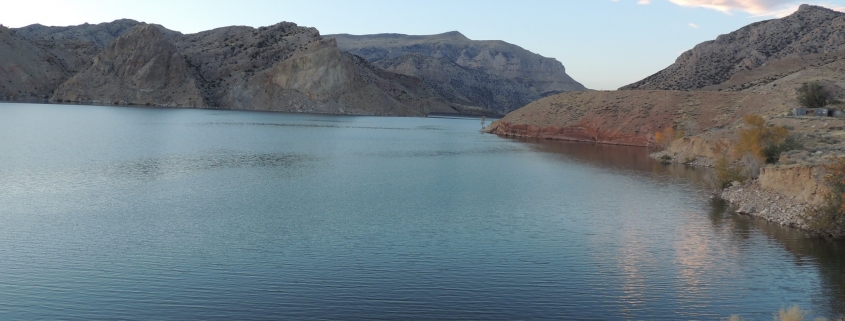

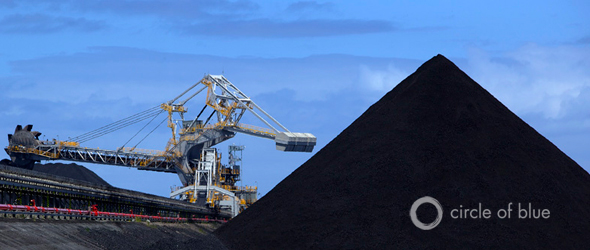

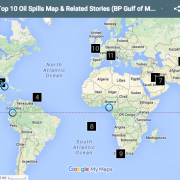
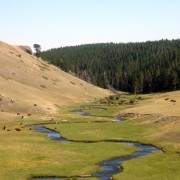


Leave a Reply
Want to join the discussion?Feel free to contribute!